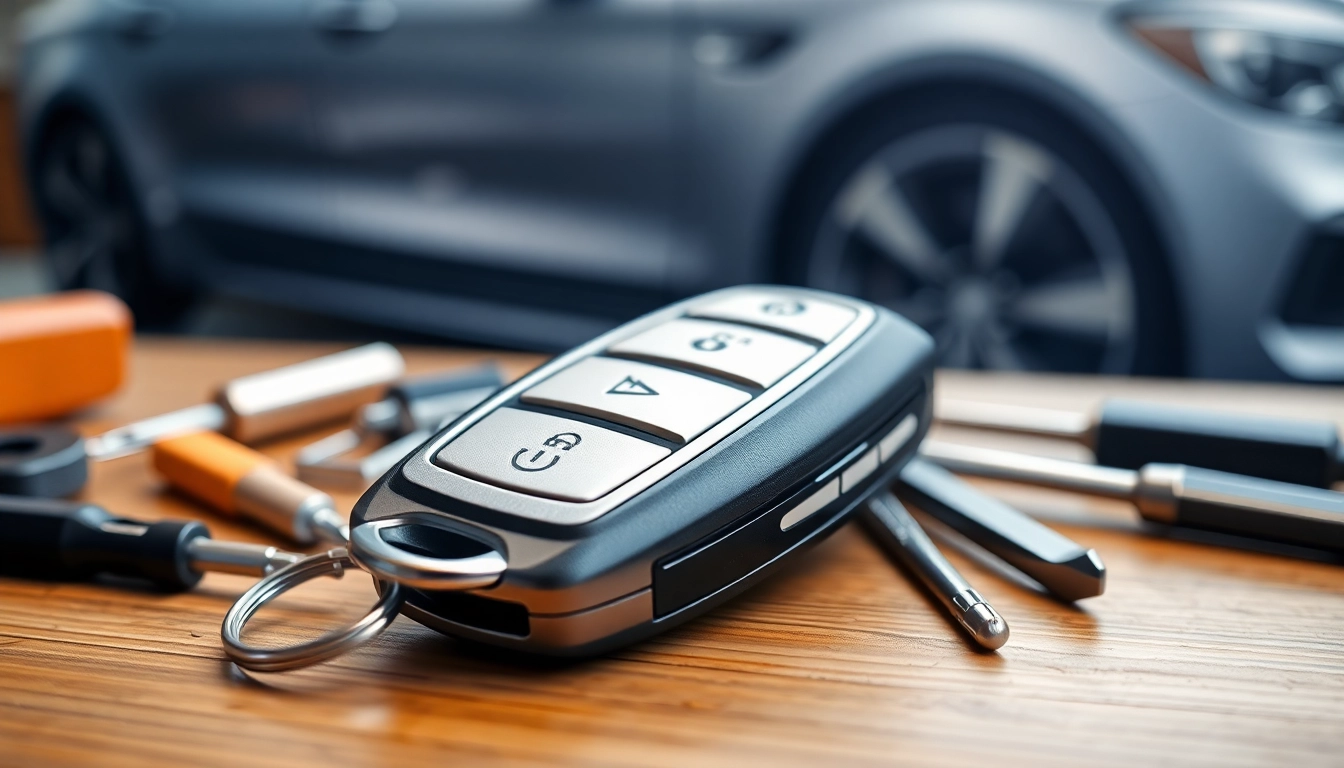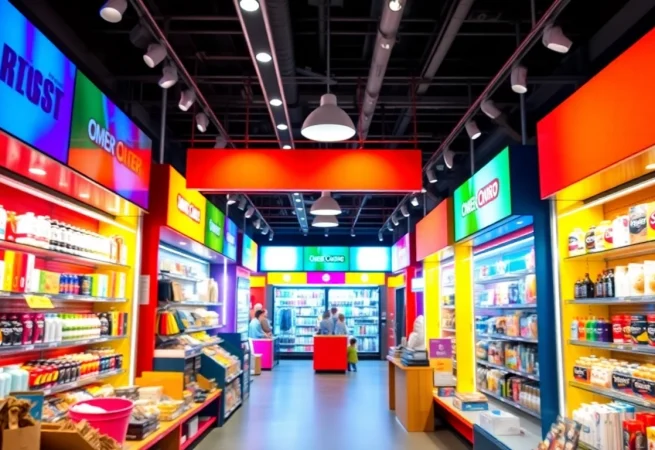

Rückenschmerzen: Ursachen, Prävention und effektive Behandlungsmethoden
Rückenschmerzen verstehen: Was sie sind und wie sie entstehen
Rückenschmerzen gehören zu den häufigsten gesundheitlichen Beschwerden in der Bevölkerung. Sie können sowohl temporär auftreten als auch chronisch werden und viele Aspekte des täglichen Lebens beeinflussen. Um diese weit verbreitete Problematik besser zu verstehen, ist es wichtig, ihre Ursachen und Symptome zu kennen und zu lernen, wie man sie effektiv behandeln kann. Hierbei spielt auch die Prävention eine entscheidende Rolle. In diesem Artikel werden wir die verschiedenen Aspekte von Rückenschmerzen umfassend beleuchten. Informationen über Rückenschmerzen helfen Ihnen, sich noch besser mit diesem Thema auseinanderzusetzen.
Definition und Arten von Rückenschmerzen
Rückenschmerzen, auch als Notalgie bezeichnet, sind Schmerzen, die im Rückenbereich auftreten und die durch verschiedene Ursachen hervorgerufen werden können. Man unterscheidet zwischen akuten und chronischen Rückenschmerzen:
- Akute Rückenschmerzen: Diese treten plötzlich auf und können oft durch ein spezifisches Ereignis verursacht werden, wie z. B. eine falsche Bewegung oder das Heben eines schweren Gegenstands. Die Dauer dieser Schmerzen beträgt in der Regel weniger als sechs Wochen.
- Chronische Rückenschmerzen: Diese sind definiert als Schmerzen, die länger als drei Monate andauern und häufig ein Zeichen für zugrunde liegende gesundheitliche Probleme sind. Sie können das Resultat von degenerativen Erkrankungen, Verletzungen oder chronischen Entzündungen sein.
Häufige Ursachen von Rückenschmerzen
Die Ursachen von Rückenschmerzen sind vielfältig und oft komplex. Zu den häufigsten gehören:
- Muskelverspannungen: Eine der häufigsten Ursachen sind Verspannungen der Rückenmuskulatur, häufig im Zuge von Fehlhaltungen oder Überlastungen.
- Wirbelsäulenprobleme: Erkrankungen wie Bandscheibenvorfälle oder degenerative Veränderungen der Wirbelsäule können zu Schmerzen führen.
- Unfälle: Stürze oder Verletzungen können akute Rückenschmerzen verursachen.
- Stress: Psychischer Stress kann sich in körperlichen Beschwerden äußern, darunter auch Rückenschmerzen.
Symptome und Begleitsymptome von Rückenschmerzen
Die Symptome von Rückenschmerzen können sehr unterschiedlich sein, je nach Ursache und Schweregrad. Häufig treten neben den Schmerzen weitere Begleitsymptome auf, die auf eine ernsthaftere Erkrankung hinweisen können. Zu diesen Symptomen zählen:
- Einschränkung der Bewegungsfähigkeit
- Taubheitsgefühle oder Schwäche in den Beinen
- Schmerzen, die in die Beine ausstrahlen (Ischias)
- Beeinträchtigungen des Schlafs durch Schmerzen
Risikofaktoren und Prävention von Rückenschmerzen
Um Rückenschmerzen zu vermeiden, ist es nützlich, sich der verschiedenen Risikofaktoren bewusst zu sein und gezielt präventive Maßnahmen zu ergreifen. Damit kann man nicht nur das Risiko senken, sondern auch die Lebensqualität erhöhen.
Lebensstil: Einfluss von Bewegung und Ernährung
Ein aktiver Lebensstil spielt eine zentrale Rolle in der Prävention von Rückenschmerzen. Regelmäßige Bewegung stärkt die Muskulatur, verbessert die Flexibilität und unterstützt die Wirbelsäule. Zusätzlich sollte man auf eine ausgewogene Ernährung achten, die reich an Vitaminen und Mineralien ist. Diese Faktoren tragen zur Erhaltung eines gesunden Körpergewichts bei, was ebenfalls das Risiko von Rückenschmerzen reduziert.
Ergonomie im Alltag: Tipps zur Vorbeugung von Rückenschmerzen
Eine ergonomische Umgebung kann das Risiko für Rückenschmerzen erheblich verändern. Hier sind einige einfache Tipps:
- Verwenden Sie einen ergonomischen Stuhl bei der Arbeit.
- Stellen Sie Ihren Schreibtisch so ein, dass der Bildschirm auf Augenhöhe ist.
- Machen Sie regelmäßige Pausen vom Sitzen und dehnen Sie sich.
- Achten Sie darauf, schwere Lasten richtig zu heben, indem Sie die Beine und nicht den Rücken benutzen.
Psychologische Faktoren und Rückenschmerzen
Psychologische Faktoren spielen eine bemerkenswerte Rolle bei der Entwicklung und dem Verlauf von Rückenschmerzen. Stress, Angst und Depression können körperliche Beschwerden verstärken. Daher ist es hilfreich, Techniken zur Stressbewältigung zu erlernen, wie z. B. Meditation, Atemübungen oder Yoga. Psychologische Unterstützung kann ebenso wirkungsvoll sein, um chronische Rückenschmerzen zu behandeln.
Diagnose von Rückenschmerzen: Wann zum Arzt?
Eine frühzeitige Diagnose ist entscheidend, um ernsthafte Erkrankungen auszuschließen und eine geeignete Behandlung einzuleiten. Folgende Anzeichen sollten ein Arztbesuch veranlassen:
Vorgehensweise bei der Diagnose von Rückenschmerzen
Die Diagnosestellung beginnt in der Regel mit einem ausführlichen Patientengespräch, gefolgt von einer körperlichen Untersuchung. Hierbei wird die Beweglichkeit getestet und nach spezifischen Schmerzpunkten gesucht. Gegebenenfalls sind weiterführende bildgebende Verfahren wie Röntgen, MRT oder CT erforderlich.
Wichtige Untersuchungsmethoden
Verschiedene Untersuchungsmethoden können zur Diagnosestellung herangezogen werden:
- Röntgenaufnahmen: Dienen der Beurteilung von Knochenstrukturen.
- Magnetresonanztomographie (MRT): Besonders hilfreich zur Beurteilung von Weichteilen, Bandscheiben und Nerven.
- Computertomographie (CT): Gibt detaillierte Einblicke in die Wirbelsäule und deren Strukturen.
Wann eine ärztliche Untersuchung notwendig ist
Ein Arzt sollte aufgesucht werden, wenn Rückenschmerzen länger als ein paar Tage anhalten, von schweren Begleitsymptomen begleitet werden oder nach einem Unfall auftreten. Auch bei Schmerzen, die in die Beine ausstrahlen oder Taubheitsgefühle verursachen, ist eine medizinische Abklärung zwingend erforderlich.
Behandlungsmöglichkeiten für Rückenschmerzen
Die Behandlung von Rückenschmerzen richtet sich nach der Ursache, dem Schweregrad und der Dauer der Beschwerden. Es gibt sowohl konservative als auch invasive Behandlungsoptionen.
Konservative Behandlung: Physiotherapie und Schmerzmittel
In den meisten Fällen können Rückenschmerzen durch konservative Maßnahmen behandelt werden. Physiotherapie ist besonders effektiv zur Stärkung der Rückenmuskulatur und zur Verbesserung der Beweglichkeit. Schmerzmittel wie nicht-steroidale Antirheumatika (NSAR) können zur Schmerzlinderung eingesetzt werden, sollten jedoch nicht langfristig angewendet werden.
Alternative Therapien gegen Rückenschmerzen
Zusätzlich zur Physiotherapie gibt es eine Vielzahl alternativer Ansätze, die bei Rückenschmerzen helfen können. Dazu gehören:
- Akupunktur: Diese traditionelle chinesische Therapie kann Schmerzen lindern und die Heilung fördern.
- Chiropraktik: Die manuelle Therapie kann Wirbelsäulenprobleme behandeln und Schmerzen reduzieren.
- Yoga und Tai Chi: Diese Bewegungstechniken fördern die Flexibilität und Stärke der Muskulatur, was zur Schmerzlinderung beiträgt.
Chirurgische Optionen: Wann sind sie notwendig?
In seltenen Fällen sind chirurgische Interventionen notwendig, z. B. wenn ein Bandscheibenvorfall vorliegt, der Nerven komprimiert oder wenn andere strukturelle Probleme nicht auf konservative Behandlungen ansprechen. Die Entscheidung für eine Operation sollte individuell getroffen werden und der Patient muss über alle Risiken und Vorteile informiert werden.
Leben mit Rückenschmerzen: Strategien zur Bewältigung
Chronische Rückenschmerzen können das Leben erheblich beeinträchtigen. Daher ist es wichtig, Strategien zur Bewältigung zu entwickeln und die Lebensqualität zu verbessern.
Langfristige Strategien zur Schmerzbewältigung
Um mit Rückenschmerzen zu leben, können folgende Strategien hilfreich sein:
- Schmerztagebuch führen: Um die Auslöser und Verlauf der Schmerzen zu erkennen.
- Regelmäßig Bewegung und gezielte Rückenübungen in den Alltag integrieren.
- Gesunde Lebensweise: Ausreichende Ernährung, ausreichend Schlaf und Stressmanagement sind ebenfalls entscheidend.
Unterstützende Therapien: Hilfsmittel und Fitnessprogramme
Hilfsmittel wie ergonomische Stühle oder orthopädische Matratzen können helfen, die Belastung des Rückens zu reduzieren. Zudem gibt es zahlreiche Fitnessprogramme, die sich speziell an Menschen mit Rückenschmerzen richten und geeignet sind, die Muskulatur sanft zu kräftigen und die Flexibilität zu fördern.
Psychologische Unterstützung und Rückenschmerzen
Die psychologische Komponente sollte bei der Behandlung von Rückenschmerzen nicht vernachlässigt werden. Kognitive Verhaltenstherapie kann effektiv dazu beitragen, negative Denkmuster zu verändern und die Schmerzbewältigung zu unterstützen. Eine multikodale Therapie gibt den Betroffenen die besten Chancen, ein erfülltes Leben trotz bestehender Rückenschmerzen zu führen.

Stylish and Functional Lanyard Keychain Designs for Everyday Use
Introduction to Lanyard Keychains
Lanyard keychains are multifunctional accessories that have become essential for individuals who prioritize convenience and style. These handy items typically combine a durable lanyard with a keychain, making it easy to carry essentials like keys, ID badges, or small personal items. Whether you’re at work, school, or on an adventurous outing, a lanyard keychain provides an accessible way to keep your most important belongings within reach without sacrificing personal style.
What is a Lanyard Keychain?
A lanyard keychain consists of two primary components: the lanyard—a strap worn around the neck or wrist—and the keychain, which is typically attached to this strap via a clip or ring. This design allows users to carry various items such as keys, small tools, identification badges, or even decorations that reflect personal interests or branding. The lanyard is usually made from durable materials such as polyester, nylon, or cotton, while the keychain itself could be a simple ring or a more elaborate design with charms.
History and Evolution of Lanyard Keychains
The history of lanyards dates back to the 15th century, primarily used by military officers to secure swords or tools. Over time, the usage evolved, and in recent decades, lanyards have transformed into versatile accessories for students, employees, and event attendees. The introduction of customizable options has further enhanced their popularity, allowing organizations to imprint logos for branding purposes. Today, lanyard keychains serve both functional and aesthetic roles, catering to diverse preferences and needs.
Why Choose a Lanyard Keychain?
Opting for a lanyard keychain offers a mix of practicality and personalization. They enhance organization by keeping important items within easy reach, reduce the chance of misplaced belongings, and allow for self-expression through design customization. Additionally, businesses often use them as promotional tools, fostering brand visibility in a subtle yet effective manner.
Types of Lanyard Keychains
Fabric vs. Metallic Lanyards
When selecting a lanyard keychain, one of the primary decisions involves choosing between fabric and metallic lanyards. Fabric lanyards are available in various colors, patterns, and textures, making them ideal for casual use and events. They are lightweight and comfortable, suitable for all-day wear. In contrast, metallic lanyards offer a sleek, professional appearance and are popular in corporate settings or for formal events. They provide added durability, making them suitable for heavier items.
Customizable Options for Lanyard Keychains
Customization is a significant factor in the appeal of lanyard keychains. Users can select from a variety of styles, colors, and lengths to find the perfect fit. Additionally, businesses and organizations can create lanyards featuring their logos or slogans, enhancing brand recognition. Some services allow for the inclusion of personal designs or images, appealing to individual tastes and preferences. This makes them excellent gifts or promotional items for events and campaigns.
Environmentally Friendly Choices
As sustainability becomes increasingly important to consumers, many manufacturers now offer eco-friendly lanyard keychains made from recycled or organic materials. These options not only reduce environmental impact but also resonate with a growing demographic that prioritizes sustainable practices. Choosing an eco-friendly lanyard keychain is a powerful way to showcase personal values while still enjoying the functionality and aesthetics of the accessory.
How to Style Your Lanyard Keychain
Matching with Daily Outfits
Integrating a lanyard keychain into daily outfits can enhance personal style. For casual attire, a colorful or patterned lanyard can serve as a playful accessory, while a more formal lanyard complements business attire and creates a polished look. Accessories can be coordinated by matching them with the predominant colors of outfits, allowing for an expressively stylish statement.
Using Lanyards for Brand Promotion
Businesses often capitalize on lanyard keychains as promotional tools, using them in events, trade shows, or as employee gifts. A well-designed lanyard featuring a company logo can effectively increase brand visibility, especially in crowded environments. It’s essential to consider colour schemes, logo placement, and lanyard style to ensure they align with the brand’s identity and messaging.
Creative Ways to Personalize Your Keychain
Personalizing a lanyard keychain can involve various creative methods. Options include adding custom charms that reflect hobbies or interests, using fonts and colours that mirror personality traits, or incorporating meaningful symbols. Personalization heightens an emotional connection to the item and can often spark conversation or connection with others who share similar interests.
Practical Uses for Lanyard Keychains
Everyday Uses: Keys and IDs
The primary use of lanyard keychains is to hold keys and identification badges. Whether you need quick access to your office pass or to prevent your car keys from getting lost in your bag, lanyard keychains keep these essentials at the forefront. Their design ensures that items are not only accessible but also stylish, allowing users to express the personal style while remaining practical.
Special Occasions: Events and Promotions
Lanyard keychains are frequently used in events for participants to showcase identification or credentials. From corporate conferences to music festivals, they serve functional purposes while also making great souvenirs. Many events hand out customized lanyard keychains to attendees, creating a lasting reminder of the occasion. Implementing a unique design makes them collectible and encourages attendees to showcase them long after the event ends.
Travel Essentials: Keeping Important Items Secure
Travelers can greatly benefit from lanyard keychains for securing passports, tickets, or hotel keys. By attaching these documents to a lanyard keychain, they remain visible and accessible, reducing the risk of loss or theft. Travelers can also choose lanyards made from waterproof or durable materials, ensuring their valuables stay safe even in adverse conditions.
Frequently Asked Questions about Lanyard Keychains
How to Maintain Your Lanyard Keychain?
Maintaining a lanyard keychain involves simple care practices. Regular cleaning helps avoid dirt build-up, especially on fabric lanyards. Most washable lanyards can be cleaned with mild soap and water. For metallic lanyards, a soft cloth can be used to wipe down surfaces. Proper storage is also essential—hanging them can avoid tangles and snags, prolonging their life.
Are Lanyard Keychains Safe for Outdoor Use?
Yes, many lanyard keychains are designed for outdoor use, especially those made from durable, weather-resistant materials. Whether hiking, camping, or engaging in outdoor events, it’s advisable to select lanyards that can withstand various environmental factors. This will ensure that they won’t deteriorate quickly, providing consistent performance even in challenging conditions.
Where to Buy Quality Lanyard Keychains?
Quality lanyard keychains can be sourced from various retailers, both online and offline. Websites like Amazon, Etsy, and direct manufacturers, such as Vograce, offer a diverse range of options. When seeking quality, it is essential to read reviews or opt for well-known brands to ensure durability and reliability. Custom options are also widely available, allowing customers to specify their designs and functionalities.

Crafting Unique Custom Acrylic Keychains with an Expert Acrylic Keychain Maker
Understanding Acrylic Keychains: What Makes Them Special?
Acrylic keychains have gained immense popularity as versatile and customizable promotional items. Their unique qualities—such as light weight, durability, and vibrant color options—make them an excellent choice for businesses and individuals looking to create memorable keepsakes or promotional materials. When searching for an acrylic keychain maker, it’s essential to understand these key features that set acrylic keychains apart from other materials.
The Production Process of Acrylic Keychains
The production of acrylic keychains begins with high-quality acrylic sheets, which come in various thicknesses and colors. The manufacturing process typically involves the following steps:
- Design Approval: Customers provide design files compatible with their chosen manufacturer. Formats such as PNG or vector files are ideal.
- Laser Cutting: Once the design is approved, the acrylic sheets are precisely cut using laser technology, ensuring accurate and intricate shapes.
- Printing: If the design includes images or colors, high-resolution printing techniques are employed to apply vibrant graphics to the acrylic surface.
- Finishing Touches: After cutting and printing, the keychains may undergo various finishing processes, such as polishing or adding attachments, making them ready for use.
Types of Acrylic Keychains Available
Acrylic keychains come in a variety of styles and types, catering to different preferences and use cases. Here are some popular options:
- Clear Acrylic Keychains: These offer a minimalist look, allowing designs to stand out distinctly.
- Colored Acrylic Keychains: Available in numerous colors, these keychains can make a bold statement.
- Double-Sided Keychains: These feature designs or images on both sides, providing more creative opportunities.
- Custom Shapes and Sizes: Beyond standard designs, acrylic keychain makers can create custom shapes to meet specific branding needs.
Benefits of Custom Acrylic Keychains for Branding
Custom acrylic keychains serve as effective branding tools. Here’s why they matter:
- High Visibility: Keychains are often carried on bags or sets of keys, providing continual exposure to potential customers.
- Cost-Effectiveness: Acrylic keychains can be produced at a lower cost compared to other promotional items, making them a great option for large events or giveaways.
- Customization: The ability to personalize keychains allows businesses to reflect their brand identity through unique designs.
- Practical Use: Unlike some promotional items that might go unused, keychains are practical, increasing the likelihood of frequent use.
Choosing the Right Acrylic Keychain Maker
Selecting the right manufacturer is crucial to the success of your custom acrylic keychains. Here are some key considerations to ponder:
Factors to Consider When Selecting a Manufacturer
When choosing an acrylic keychain maker, consider the following factors:
- Experience and Reputation: Research the manufacturer’s history and reviews to ensure they’ve successfully delivered quality products.
- Product Range: A trustworthy maker should offer a wide range of products, including various sizes, shapes, and printing techniques.
- Production Capabilities: Ensure the manufacturer can accommodate your order size, whether it’s a small batch or a large scale production.
- Customer Service: A responsive and helpful customer service team can significantly enhance your ordering experience.
How to Assess Quality and Design Flexibility
Assessing the potential quality and flexibility of design during your selection process involves:
- Requesting Samples: Reputable manufacturers should provide samples of their work to evaluate the quality.
- Inquiring About Materials: Understand the quality of acrylic used. Higher-grade acrylic often translates to better durability and appearance.
- Design Templates: Review the available design templates and ask specific questions about customizing options.
- Flexibility in Modifications: Confirm how easily you can modify designs or request adjustments before finalizing the production order.
Common Mistakes to Avoid with Acrylic Keychain Orders
While ordering custom acrylic keychains, it’s easy to overlook critical details. Avoid these common mistakes:
- Not Proofreading Designs: Always double-check designs for errors before submission. Misspellings or incorrect colors can lead to costly mistakes.
- Ignoring Minimum Order Quantities: Understand the manufacturer’s minimum order sizes to avoid unexpected costs.
- Underestimating Timeframes: Be mindful of production timelines; orders can take longer than anticipated, especially during peak seasons.
- Neglecting to Ask About Shipping Costs: Confirm shipping costs and options upfront to avoid surprises when completing your transaction.
Designing Your Custom Acrylic Keychain
Effective design is the heart of successful acrylic keychains. Here are some essential aspects to keep in mind while designing your keychains:
Popular Design Trends for Acrylic Keychains
Staying in tune with design trends can enhance the appeal of your acrylic keychains:
- Minimalism: Simple, clean designs resonate well, focusing on a single image or logo without overcrowding.
- Bold Typography: Striking fonts in playful arrangements can make your keychain message stand out.
- Interactive Elements: Adding movable parts or unique shapes can intrigue the audience further and make the keychain more fun to use.
- Eco-friendly Themes: Using materials that emphasize sustainability aligns with current consumer preferences.
Best Practices for Creating Eye-Catching Designs
Consider these best practices to ensure your designs catch the eye:
- High-Resolution Images: Always use high-resolution files to maintain print quality.
- Consider Color Contrast: Ensure your design has enough contrast to be legible from a distance.
- Incorporate Branding: Keep your brand colors and logos consistent across designs for brand recognition.
- Simplicity is Key: Avoid clutter; aim for a clean and clear design that effectively conveys your message.
Tools and Software for Designing Acrylic Keychains
A range of tools and software can facilitate the design process:
- Adobe Illustrator: Ideal for vector graphics, ensuring scalability without losing image quality.
- Canva: A user-friendly platform offering free tools to create stunning visuals quickly.
- Affinity Designer: Another professional-grade tool flexible for various design projects.
- CorelDRAW: Popular among graphic designers, allowing for sophisticated designs tailored to custom specifications.
Ordering & Production Timelines with an Acrylic Keychain Maker
Understanding the ordering and production process can help you plan and manage timelines effectively. Here’s what to expect:
Typical Turnaround Times for Orders
Production timelines can vary based on several factors, including order size and complexity. Generally, you can expect:
- Small Orders: Typically processed within 5 to 7 business days.
- Medium to Large Orders: May require 10 to 15 business days, depending on the intricacy of the designs.
- Rush Orders: Some manufacturers may offer expedited services for an additional fee, leading to faster turnaround.
Understanding the Production Process Timeline
Here’s a breakdown of the typical production process:
- Design Phase: Upon receiving the design, the manufacturer will usually take 1 to 3 business days to finalize proofing.
- Manufacturing Phase: The actual production process can take anywhere from 3 to 10 business days, depending on order volume.
- Quality Assurance: Following production, a quality check ensures all pieces meet the specifications. This may add up to 2 additional days.
- Shipping Time: Considered separately, shipping can take anywhere from 1 to 5 business days, depending on your location.
Tips for Fast-Tracking Your Order
To expedite the ordering process, consider the following strategies:
- Submit High-Quality Designs: Ensure your design files meet the manufacturer’s requirements to avoid delays.
- Communicate Expectations: Clearly communicate any deadlines to the manufacturer right from the beginning.
- Opt for Simple Designs: Less intricate designs can often be processed more quickly.
- Choose Available Templates: Using existing design templates can help fasten the approval and production stages.
Maximizing the Impact of Your Acrylic Keychains
To ensure maximum effectiveness of your acrylic keychains as a marketing tool, here are crucial actions to consider:
Utilizing Custom Keychains in Marketing Campaigns
Custom acrylic keychains can effectively enhance marketing efforts through:
- Event Giveaways: Handing out keychains at trade shows or events can attract potential customers and serve as memorable keepsakes.
- Brand Ambassadors: Encourage fans or brand advocates to distribute keychains, fostering grassroots promotion.
- Seasonal Promotions: Create limited-time keychain designs around holidays or special events to encourage purchases.
Innovative Uses for Custom Acrylic Keychains
Apart from traditional promotional uses, there are numerous inventive ways to utilize custom acrylic keychains:
- Fun Reminder Tools: Use them as personal reminders, such as keychains that highlight motivational quotes or essential tasks.
- Interactive Games: Build simple mobile or desktop games that incorporate custom-designed keychains as part of the gameplay.
- Charitable Fundraisers: Leverage custom keychains for fundraising efforts, selling them to support causes important to your community.
Measuring the Success of Your Keychain Promotions
To validate the effectiveness of your acrylic keychains, employ these measurement techniques:
- Customer Feedback: Collect feedback directly from customers to gauge their perception and usability of the keychains.
- Engagement Tracking: Monitor metrics such as increased foot traffic during events where keychains are distributed.
- Sales Analysis: Evaluate sales figures before and after the promotional campaign to determine financial impact.
- Social Media Monitoring: Track shares, likes, and mentions of your keychains to measure online engagement.

Understanding Aravind Srinivas: Visionary Leader in AI and Technology
Biography of Aravind Srinivas
Early Life and Education
Aravind Srinivas was born on June 7, 1994, in Chennai, India. From a young age, he exhibited an exceptional interest in technology, particularly in the realms of computer science and artificial intelligence. His educational journey began at the prestigious Indian Institute of Technology, Madras (IIT-Madras), one of India’s top engineering institutions. Aravind’s ambition and determination saw him excel academically, eventually leading him to the University of California, Berkeley, in the United States, where he further developed his expertise in computer science, focusing on deep learning and reinforcement learning.
During his time at Berkeley (2017–2021), Aravind worked under the guidance of renowned professor Pieter Abbeel, completing his doctoral thesis titled “Representation Learning for Perception and Control.” This work has since positioned him as a significant contributor to ongoing advancements in AI technologies.
Career Journey
Aravind’s career trajectory is marked by his entrepreneurial spirit and keen interest in artificial intelligence. He co-founded aravind srinivas in the AI sector with a passion for creating meaningful technologies that influence the way people interact with information. Alongside his colleagues, he established Perplexity AI, a company specializing in conversational search technologies, aiming to simplify and enhance the search experience for users.
His unique approach to AI development emphasizes practical implementations of theoretical knowledge, which has garnered him recognition in both academic and industry circles. Aravind has quickly become a prominent figure in the tech landscape, often contributing to discussions about the future of AI and its ethical implications. His journey reflects not only his achievements but also his commitment to pushing the boundaries of what’s possible in AI.
Achievements and Recognition
As the CEO of Perplexity AI, Aravind Srinivas has earned accolades for his visionary leadership and innovative contributions to AI technologies. Under his guidance, the company has reached a remarkable valuation of $1 billion, illustrating the market’s confidence in his vision and execution. Furthermore, Aravind’s work has resulted in significant advancements in conversational AI, putting Perplexity AI at the forefront of this rapidly evolving field.
His research contributions have been published in various prestigious journals, establishing him as a thought leader. Aravind’s expertise in deep learning and reinforcement learning continues to inspire a new generation of AI professionals and enthusiasts excited about the tech’s potential to transform industries.
Aravind Srinivas’s Role at Perplexity AI
Company Overview and Mission
Perplexity AI, co-founded by Aravind Srinivas, is an innovative company focused on advancing conversational AI technology. The mission of the organization is to democratize access to information through intelligent, user-friendly conversational interfaces. By harnessing the power of AI, Aravind envisions a future where users can receive accurate and nuanced answers to their queries, making information retrieval as seamless as possible.
The company utilizes cutting-edge machine learning algorithms to enhance the efficiency and accuracy of search responses, providing a significant advantage over traditional search methods. This mission aligns with Aravind’s belief that technology should augment human capabilities, not replace them.
Innovations in AI Technology
Under Aravind’s leadership, Perplexity AI has pioneered several advancements in natural language processing (NLP) and machine learning. One of their notable innovations has been the development of sophisticated models capable of understanding context and intent within user inquiries. This results in more accurate search results that genuinely understand user needs.
Another key area of focus for Aravind has been the exploration of contrastive learning methods, which enhance the AI’s ability to differentiate between similar data points. This technology holds immense potential for improving AI’s understanding of nuances in user queries, creating a more refined interaction experience.
Leadership Style and Philosophy
Aravind Srinivas is known for his collaborative and inclusive leadership style. He encourages open communication within his team, believing that innovation thrives in an environment where diverse ideas are welcomed. This philosophy not only fuels creativity but also fosters a culture of continuous learning and improvement, crucial qualities in a fast-paced sector like AI.
Moreover, Aravind emphasizes ethical practices in technology development. He advocates for responsible AI usage that considers societal impacts, reflecting his commitment to ensuring that technology serves humanity positively and constructively.
Research Contributions by Aravind Srinivas
Key Research Areas and Findings
Aravind’s research spans various domains within computer science, primarily focusing on deep learning, reinforcement learning, and contrastive learning, as indicated in his extensive body of work. His doctoral dissertation has laid foundational insights into representation learning, specifically examining how AI systems perceive and act in dynamic environments.
This research explores the mechanisms by which AI can learn from diverse data inputs and apply this knowledge effectively, setting the stage for breakthrough implementations in real-world applications, particularly within conversational AI.
Publications and Collaborations
Aravind Srinivas has contributed numerous articles and papers to respected scientific journals and conferences, detailing his research findings and collaborative projects with fellow experts in AI. His publications often cover a wide range of topics, including advancements in machine learning algorithms, ethics in AI, and the implications of emerging technologies for businesses and society at large.
Collaboration has been a key aspect of his research approach, allowing for the cross-pollination of ideas and ensuring comprehensive exploration of complex problems. This methodology not only elevates his work but also encourages collective advancements in the field.
Impact on the AI Community
Aravind’s contributions to artificial intelligence extend beyond his research and company leadership; he is actively involved in community engagements that aim to inspire and educate future generations of AI professionals. His influence within the AI community is profound as he shares insights on navigating technological advancements responsibly and effectively.
The work he has done at Perplexity AI serves as a case study for many aspiring entrepreneurs and technologists looking to impact the field meaningfully. His focus on user-centric design in AI also encourages a broader industry conversation around balancing innovation with ethical considerations.
Future Prospects for Aravind Srinivas
Vision for AI Advancements
Aravind Srinivas is committed to leading the charge in artificial intelligence innovation. His vision encompasses a future where AI seamlessly integrates into everyday life, enhancing human capabilities and optimizing workflows across various sectors. He envisions advancements not just in technology but also improvements in accessibility, ensuring that such innovations can reach and benefit broad segments of the population.
Moreover, he aims to explore the intersections of AI with other fields, such as healthcare and education, to create solutions that address pressing societal challenges. This interdisciplinary approach will be pivotal in shaping the capabilities of future AI systems.
Potential Challenges Ahead
Despite the promising landscape of AI, Aravind acknowledges the potential hurdles that come with rapid technological advancements. Key challenges include navigating the ethical ramifications of AI decisions, ensuring data privacy, and addressing biases embedded within AI training data.
Aravind’s leadership will play a vital role in addressing these challenges as he emphasizes ethical AI development. His proactive approach to these issues will be crucial in ensuring that Perplexity AI remains a trusted entity in the AI space, fostering a culture where technological growth aligns with societal values.
Advice for Aspiring Entrepreneurs
For those looking to follow in Aravind’s footsteps, he offers several pieces of advice. Firstly, he stresses the importance of a strong foundational knowledge in your field; thorough understanding paves the way for innovation. Secondly, networking and collaboration are vital. Engaging with like-minded professionals can lead to creative solutions and unexpected opportunities.
Additionally, he advocates for persistence and resilience. The road to success is often paved with challenges, and it is crucial to maintain focus and dedication, even in the face of adversity. Lastly, an ongoing commitment to learning and adapting is essential in the ever-evolving technology landscape, ensuring relevance in one’s work in an increasingly competitive environment.
Engagement and Community of Aravind Srinivas
Social Media Presence
Aravind Srinivas maintains a robust social media presence, leveraging platforms to share insights and advancements in artificial intelligence and engage with a broader audience. Through his posts, he not only showcases updates regarding Perplexity AI but also sparks discussions on the ethical implications and future potential of AI technologies.
His engagement on platforms like Instagram and LinkedIn helps bridge the gap between complex technological topics and everyday users, thus fostering a community keen on understanding and utilizing AI appropriately.
Public Speaking and Interviews
As a thought leader, Aravind is often invited to speak at various events, conferences, and forums. His public speaking engagements cover a range of topics, from innovations in AI to the ethical considerations surrounding its use. These opportunities allow him to inspire budding technologists and lay audiences alike, sharing his vision of a world enriched by artificial intelligence.
He frequently appears in podcasts and interviews, where he articulates his thoughts on current trends in technology, challenges faced by the industry, and his personal journey in building a successful AI company.
Contribution to Tech Education
Aravind is a fervent advocate for tech education and regularly supports initiatives aimed at improving access to educational resources for students interested in AI. He collaborates with educational institutions and participates in workshops designed to educate young minds about the possibilities within AI and related fields.
Through mentorship programs and actively participating in educational events, he strives to cultivate a new generation of engineers and entrepreneurs who can contribute positively to the ever-evolving tech landscape. His contributions are helping to shape the educational approach towards AI, ensuring it is inclusive, innovative, and future-focused.

Understanding the Role of PTSD Dog in Healing and Support
Introduction to PTSD Dog
Post-Traumatic Stress Disorder (PTSD) affects millions of individuals worldwide, manifesting through severe anxiety, flashbacks, and emotional distress. While traditional treatments like therapy and medication play pivotal roles in managing PTSD, the integration of a PTSD dog into recovery protocols has emerged as a promising alternative or complementary approach. These specially trained animals provide not only companionship but also specific skills that aid their handlers in coping with the complex symptoms associated with PTSD.
Definition and Purpose
A PTSD dog, often referred to as a psychiatric service dog, is trained to assist individuals who suffer from psychological conditions like PTSD. Their primary purpose is to mitigate the disabling symptoms caused by trauma. By performing specific tasks such as grounding their handler during anxiety attacks, providing a sense of safety in public spaces, and offering companionship, they become essential companions in the journey toward recovery. PTSD dogs undergo extensive training to ensure they can effectively support their handlers in everyday situations, creating a bridge to a more normalized life.
Benefits of Having a PTSD Dog
The benefits of having a PTSD dog extend well beyond the realm of emotional support. Various studies indicate that the presence of a canine companion can lead to significant improvements in mental health. Some notable benefits include:
- Reduced Anxiety: The calming presence of a PTSD dog can help decrease anxiety levels, allowing individuals to feel more secure in social situations.
- Improved Social Interaction: PTSD dogs often serve as social icebreakers, making it easier for the handler to connect with others.
- Increased Routine: Caring for a dog necessitates a routine, which can be beneficial for someone struggling with the unpredictability of PTSD symptoms.
- Heightened Awareness: These dogs are trained to recognize signs of distress in their handlers, intervening at critical moments to prevent escalations.
- Enhanced Physical Activity: Walking and playing with a dog encourages exercise, which is vital for both physical and mental health.
How PTSD Dogs Are Trained
The training process for PTSD dogs is rigorous and specialized. Due to their crucial role in a handler’s daily life, these dogs must be adept at identifying and responding to various triggers associated with PTSD. Training typically includes:
- Basic Obedience: Like all service animals, PTSD dogs begin with foundational commands such as sit, stay, and come.
- Public Access Training: These dogs must behave appropriately in public spaces, demonstrating skills that ensure their handlers’ comfort and safety.
- Task-specific Training: This may involve retrieving medications, providing deep pressure therapy during an anxiety attack, or creating a physical buffer in social situations.
- Behavioral Training: Positive reinforcement methods are often used to instill acceptable behaviors while discouraging anxiety-induced reactions.
Identifying the Need for a PTSD Dog
Recognizing the signs that a PTSD dog might be beneficial is crucial for individuals experiencing PTSD. Understanding one’s own needs is the first step in healing.
Signs of PTSD in Individuals
For many, the symptoms of PTSD can be so overwhelming that they often go unrecognized. Common signs include:
- Flashbacks and Nightmares: Re-experiencing traumatic events through vivid flashbacks or distressing dreams.
- Avoidance Behavior: Steering clear of places, people, or activities that serve as reminders of the trauma.
- Hyperarousal: Exhibiting heightened responses such as irritability, difficulty sleeping, or exaggerated startle responses.
- Emotional Numbness: Feeling detached from reality or loved ones, making it hard to form connections.
Assessing Compatibility Between Dogs and Handlers
Before adopting a PTSD dog, it’s essential to assess whether there is a compatible match between the dog and the handler. Key factors to consider include:
- Personality Fit: The dog’s temperament should align with the handler’s lifestyle and emotional needs.
- Energy Level: Matching the dog’s energy with the handler’s activity level aids in ensuring a productive partnership.
- Training Level: Some handlers may prefer a dog that has already undergone training, while others may want to participate in training to bond with their new service animal.
Consulting Professionals for Guidance
Engaging with mental health professionals, trainers, and even veterinarians can provide invaluable insights when deciding to adopt a PTSD dog. Assessments by qualified professionals can ensure that the handler and the dog will effectively support each other’s needs.
Training Programs for PTSD Dogs
Identifying an appropriate training program is critical for the success of a partnership between a PTSD dog and their handler. With a variety of options available, understanding each type of training can help guide the selection process.
Types of Training Available
There are multiple avenues for obtaining a properly trained PTSD dog, including:
- Service Dog Organizations: Many organizations specialize in pairing trained service dogs with individuals based on specific needs.
- Professional Trainers: Hiring individual trainers can provide tailored training specific to the needs of the handler.
- Self-training: Some individuals may choose to train their dog themselves, which can foster a strong bond and provide customized support.
Special Skills for PTSD Support
PTSD dogs are trained to perform certain tasks essential to their handler’s recovery. Some common skills include:
- Grounding Techniques: The dog may be trained to provide pressure and physical comfort to help alleviate anxiety.
- Alerting to Distress: Dogs can be trained to recognize cues of an anxiety attack and respond appropriately, either by touching or nudging their handler.
- Creating a Buffer Zone: In crowded situations, the dog can be trained to position itself in a way that gives the handler space and comfort.
Finding Certified Trainers
When sourcing a trainer to assist in the development of a PTSD dog, it is essential to validate their qualifications. Look for:
- Certification from Recognized Organizations: Trainers should have credentials from established service dog training organizations.
- Experience with PTSD: Select trainers who have specific experience working with PTSD and understand the unique challenges involved.
- Positive Reinforcement Methods: Trainers should utilize humane and effective methods that foster a trusting relationship between the dog and the handler.
Integrating a PTSD Dog into Daily Life
Successfully incorporating a PTSD dog into daily routines involves understanding both the needs of the dog and the handler. Forming a harmonious partnership takes time, patience, and practice.
Establishing Routines and Boundaries
For optimal success, routines must be established early on. Consider the following steps:
- Daily Schedule: Develop a consistent daily routine that includes feeding, walking, and training exercises.
- Creating Safe Spaces: Designate areas in the home where the dog can retreat to feel safe and comfortable.
- Communication: Establish clear commands and signals that both the handler and dog understand to promote effective communication.
Supportive Environments for PTSD Dogs
Creating an environment conducive to both the handler and the PTSD dog is vital. Some recommendations include:
- Calm Atmosphere: Maintain a tranquil space free from loud noises or chaotic environments that can overwhelm the dog or handler.
- Positive Interaction: Engage in regular playtime and bonding activities that foster a healthy friendship.
- Monitoring Stress Levels: Both parties should be aware of each other’s stress levels, adjusting activities as needed to ensure comfort.
Community Resources and Support Systems
Engaging with community resources can further enhance the experience of having a PTSD dog. Seek out:
- Support Groups: Connecting with individuals who have similar experiences can provide emotional support and practical advice.
- Veterinary Services: Regular check-ups from a veterinarian who understands the needs of service dogs are essential.
- Training Workshops: Participate in workshops to further develop skills and approaches for better handling of PTSD-related situations.
Evaluating the Effectiveness of PTSD Dogs
As the partnership between a handler and PTSD dog develops, assessing the effectiveness of this relationship is key to ensuring the best outcomes.
Measuring Emotional and Psychological Benefits
Handlers can track their journey and measure improvements in various areas, including:
- Anxiety Levels: Regular assessments using standardized scales can help track reductions in anxiety symptoms over time.
- Social Engagement: Monitoring the frequency and comfort of social interactions can indicate improvements.
- Quality of Life Metrics: Taking note of overall life satisfaction, happiness, and daily functioning can provide broad metrics of success.
Feedback from Handlers and Professionals
Gathering qualitative feedback is equally important. Surveys, journals, or discussions with mental health professionals can yield insights about:
- Handler’s Emotional State: Understanding emotional changes can provide constructive points for ongoing adjustments and improvements.
- Behavioral Changes: Recognizing how both the handler’s and dog’s behaviors evolve can inform future training and interactions.
- Professional Recommendations: Insights offered by professionals can help refine the integration process based on evidence of joint progress.
Future Trends in PTSD and Canine Support
The field of service animals for PTSD is evolving rapidly. Upcoming trends may involve:
- Enhanced Training Techniques: Utilizing technology in training programs for more effective results.
- Expanded Roles for Dogs: Exploring potential new roles for dogs in assisting various mental health conditions.
- Greater Accessibility: Advocacy for accessible resources and training for more wide-scale adoption of PTSD dogs.

How to Choose the Best ZIP WIRE KITS for Your Backyard Adventures
Understanding ZIP WIRE KITS: What to Know
When it comes to outdoor adventures, few activities rival the thrill of zip lining. ZIP WIRE KITS bring this exhilarating experience right into your backyard, creating unforgettable memories for families and friends. But what exactly are these kits, and what should potential buyers know before they purchase? Let’s dive into the essential features and considerations of ZIP WIRE KITS that can help you make an informed decision.
Overview of ZIP WIRE KITS Features
ZIP WIRE KITS come packed with numerous features that can enhance the overall experience. Here are some of the components you can expect:
- Trolley: The trolley is the mechanism that allows you to glide along the wire. Quality kits come with reliable trolleys designed to handle considerable speeds and weight.
- Cable: The main component of any zip line, the cable must be strong and durable enough to support the intended weight and length of the ZIP WIRE KITS. Stainless steel cables are common for their resilience and longevity.
- Safety harness: Essential for ensuring rider safety, quality kits often include adjustable harnesses that fit a variety of body sizes.
- Braking system: Depending on the height and speed of the zip line, a braking system is crucial to safely bring riders to a stop.
- Installation hardware: Most kits come with a full set of installation hardware, like pulleys, ropes, and brackets, making the setup process straightforward.
Types of ZIP WIRE KITS Available
There are different types of ZIP WIRE KITS to cater to varying needs and preferences:
- Backyard ZIP WIRE KITS: Designed predominantly for residential use, these kits generally accommodate lighter weights and are simple to install.
- Heavy-duty ZIP WIRE KITS: Suitable for larger users and longer spans, these kits are constructed with robust materials to ensure safety and functionality.
- High-speed ZIP WIRE KITS: Engineered for adrenaline junkies, these kits can achieve impressive speeds and often include advanced safety features.
- Custom ZIP WIRE KITS: Some companies offer options to customize kits based on your specific backyard layout and adventure needs.
Safety Considerations When Selecting ZIP WIRE KITS
Safety must always be a priority when purchasing ZIP WIRE KITS. Here are key factors to consider:
- Weight limits: Always check the weight capacity of the kit. It’s essential for both the riders’ safety and the kit’s longevity.
- Material quality: Look for kits made from high-grade materials that are resistant to weather conditions and wear.
- Certification: Consider kits that come with certifications from relevant safety organizations, ensuring adherence to safety standards.
- Installation guidance: Kits that provide detailed installation instructions and support can help ensure safe setup.
Choosing the Right ZIP WIRE KITS for Your Space
Evaluating Your Backyard Layout
Before purchasing a ZIP WIRE KIT, analyzing your backyard layout is crucial. Start by identifying suitable locations where the zip line can be installed. Look for sturdy, elevated points, such as trees or hills, that can serve as anchor points. Make sure the area is free of obstacles like branches or buildings, which could pose risks during a ride.
Determining the Ideal Length and Height for ZIP WIRE KITS
The length and height of your ZIP WIRE KITS will significantly affect your overall experience. Consider the following:
- Distance: Longer lines can provide more excitement, but they also necessitate additional safety measures and equipment.
- Height: Higher zip lines tend to be more thrilling, but they require careful planning regarding safe landing zones and clearance above the ground.
- Angle: The slope of the zip wire will determine riding speed. A steeper angle will lead to faster rides, whereas a gentler slope can be more family-friendly.
Assessing Weight Limits for ZIP WIRE KITS
Each ZIP WIRE KIT has a specified weight limit, and it’s essential to adhere to these guidelines for safety. Evaluate the weight capacities of the kits you are considering to ensure they accommodate all potential users, from kids to adults. This assessment will guide you in selecting the appropriate zip line kit based on the intended age group and number of users.
Installation Guide for ZIP WIRE KITS
Tools and Materials Needed for ZIP WIRE KITS Setup
Installing your ZIP WIRE KITS can be a rewarding process. You will need the following tools and materials:
- Wrench set
- Screwdriver set
- Drill with appropriate bits
- Level to ensure proper alignment
- Measuring tape
- Safety gear (gloves, goggles)
Step-by-Step Installation Process
To properly install your ZIP WIRE KITS, follow these steps:
- Select and prepare your location: Ensure you’ve chosen suitable anchor points and clear the area of debris and obstacles.
- Measure and mark anchor points: Use your measuring tape and level to determine the correct height and distance for the cable span.
- Install the pulleys and hardware: Secure the hardware according to the manufacturer’s instructions, ensuring everything is tightly fastened.
- Attach the cable: Follow the guidelines to attach the main cable securely between the anchors.
- Test the setup: Before allowing riders, conduct test runs to ensure the setup functions correctly and safely.
Common Installation Mistakes to Avoid with ZIP WIRE KITS
Avoiding common pitfalls during installation can save you time and ensure safety:
- Skipping measurements: Always take multiple measurements to avoid placing equipment inaccurately.
- Ignoring weight limits: Trying to exceed manufacturer weight limits could jeopardize safety.
- Neglecting to secure components: Always double-check connections to ensure that everything is tightly secured.
- Insufficient test runs: Failing to test the system thoroughly before use can lead to dangerous situations.
Enhancing the Experience with ZIP WIRE KITS
Adding Accessories for More Fun
To make your ZIP WIRE KITS even more engaging, consider adding accessories:
- Swings: Attach swings to your setup for a varied experience.
- Gliding trolleys: Specialized trolleys can offer different gliding experiences.
- Lighting: Add festive or pathway lights for a magical evening adventure.
Creative Ideas for ZIP WIRE KITS Playdates
Enhance the fun of ZIP WIRE KITS during playdates by incorporating creative themes or competitions:
- Themed racing competitions: Set up timed races to add a competitive edge.
- Obstacle courses: Incorporate elements that riders must navigate before or after zipping.
- Treasure hunts: Create a scavenger hunt that requires riders to find clues along the zip line.
Integrating Safety Gear with ZIP WIRE KITS
Safety gear is crucial when using ZIP WIRE KITS. Riding helmets, gloves, and knee pads can significantly reduce injury risks. Ensure that all users are fitted with appropriate gear before taking their rides.
Maintaining Your ZIP WIRE KITS for Longevity
Regular Inspections for ZIP WIRE KITS Safety
Regularly inspecting your ZIP WIRE KITS is pivotal. Here’s what to look for:
- Inspect cables for signs of wear or fraying.
- Check the pulleys for smooth operation and free movement.
- Examine all hardware to ensure that connections are tight and rust-free.
Cleaning and Caring for ZIP WIRE KITS
To keep your ZIP WIRE KITS in good condition, regular cleaning is essential. Use mild soapy water to clean the cable and pulley, and ensure that dirt and debris are removed, which could undermine performance and safety. Store components, especially those that might rust, in a dry environment when not in use.
Signs It’s Time to Replace Components of ZIP WIRE KITS
Replacing worn components is vital for safety. Consider upgrading or replacing elements if you notice:
- Visible signs of wear on cables or trolleys.
- Changes in the performance of the zip line, like excessive wobbling.
- Corrosion on any metal parts, which can weaken structures.

Why a Watch Safe is Essential for Protecting Your Timepieces
Understanding the Importance of a Watch Safe
As a passionate watch collector or owner of a luxury timepiece, storing your watch safely is paramount. A watch safe not only prevents theft and damage but also serves as a dedicated space designed to protect your treasured timepieces. Whether you own vintage models, limited editions, or everyday pieces, a watch safe ensures peace of mind for any watch enthusiast, allowing you to focus on what truly matters—enjoying your collection. By investing in a watch safe, you are making a commitment to both security and preservation.
What is a Watch Safe?
A watch safe is a specialized storage solution designed specifically for the protection of watches. Unlike traditional safes that may be too bulky or unsuitable for delicate items, watch safes come in various shapes and sizes, often featuring compartments tailored to securely hold different watch models. Moreover, many models are equipped with watch winder technology, which is essential for automatic watches that need consistent movement to keep them running accurately.
Benefits of Using a Watch Safe
Utilizing a watch safe confers several significant advantages:
- Enhanced Security: A watch safe typically features robust lock mechanisms, reinforced doors, and in some cases, biometric entry systems, making it nearly impossible for unauthorized individuals to access your valuable items.
- Protection from Environment: Many watch safes are designed to combat environmental hazards such as humidity, temperature fluctuations, and dust, ensuring that your watches remain in pristine condition.
- Organizational Benefits: Watch safes provide organized storage, allowing you to keep your collection neatly arranged and easily accessible. This minimizes the risk of scratches and other damage that casual storage might cause.
- Increased Value Preservation: Properly storing your watches in a safe can help maintain their value over time, as condition plays a critical role in resale value for collectors.
Security Features to Look For
When selecting a watch safe, several key security features should be prioritized:
- Lock Type: Opt for a safe with advanced locking mechanisms, such as electronic keypads or fingerprint scanners for enhanced security.
- Material Strength: Look for safes made from durable steel or reinforced materials that can withstand break-in attempts.
- Fire and Water Resistance: Consider investing in a safe that is fireproof and waterproof to protect your belongings from unexpected disasters.
- Alarm Systems: Some high-end safes come equipped with alarm systems that alert you to unauthorized access.
Choosing the Right Watch Safe for Your Collection
Selecting the ideal watch safe requires thoughtful consideration of several factors to best fit your collection and lifestyle. Below are the essential criteria to keep in mind:
Size and Capacity Considerations
Before purchasing, assess your current collection as well as any potential expansions. Watch safes come in various sizes to accommodate different capacities, from single watch holders to larger units capable of holding dozens of timepieces. Take into account the following:
- Current Collection: Determine how many watches you currently own and whether you plan to acquire more in the future.
- Winder Capacity: If you own automatic watches, select a watch safe with watch winders that can accommodate your collection’s needs without overwinding or damaging the watches.
Material and Build Quality
The material and overall construction quality of a watch safe are crucial for ensuring long-term durability. Look for safes made from:
- High-grade Steel: Offers optimal security against physical attacks.
- Interior Lining: Soft, non-abrasive materials help prevent scratches on your watches.
Price Ranges and Budgeting
The price of a watch safe can vary greatly depending on its features, materials, and brand. Establishing a budget before shopping can help narrow down your options. Keep the following in mind:
- Entry-Level Safes: Generally range from $100 to $500 and may offer basic security features.
- Mid-Range Options: Often cost between $500 and $1,500 and include better security mechanisms, fire resistance, and sometimes multiple compartments.
- High-End Safes: Can exceed $1,500, featuring top-of-the-line security, luxury designs, and advanced technology.
How to Organize Your Watch Safe Effectively
Organizing your watch safe not only enhances security but also allows for easy access to your collection. Effective organization begins with some thoughtful planning:
Best Practices for Storing Watches
Follow these best practices to ensure that your watches remain secure and in pristine condition:
- Use Soft Pouches: Store each watch in a soft pouch or case to prevent scratches or damage when placed in the safe.
- Avoid Overcrowding: Ensure there is enough space between watches to avoid movement that could lead to scratches.
- Regular Cleaning: Every few months, clean the watches before storing them away to prevent dirt accumulation.
Creating a Display Within Your Watch Safe
For those who wish to showcase their collection even while stored, consider these display techniques:
- Utilize Clear Cases: Use transparent compartments within the safe, allowing you to appreciate your collection at a glance.
- Arrange by Type: Consider organizing watches based on categories—formal, casual, vintage, etc.—to streamline access.
Maintenance Tips for Your Watch Safe
A few simple maintenance steps can significantly extend the life of your watch safe:
- Regular Inspections: Periodically check the locks and hinges for any signs of wear or damage.
- Dusting and Cleaning: Keep the safe’s interior clean and dust-free to maintain a polished environment for your watches.
Common Concerns and Misconceptions about Watch Safes
As with any specialized storage solution, there are myths and questions that arise regarding the functionality and reliability of watch safes. Addressing these can alleviate concerns:
Are Watch Safes Fireproof?
Many modern watch safes boast fire-resistant features, designed to withstand high temperatures for a specified amount of time. When purchasing, look for safes that are certified to specific fire ratings, ensuring your valuable collection has the protection it deserves.
Can I Use a Safe for Other Valuables?
Absolutely! A watch safe can be utilized for other valuables like jewelry, important documents, and electronic devices. Just be mindful of the space and organization to prevent damage to your watches and other items.
How Often Should I Check My Watch Safe?
It is advisable to conduct a thorough check of your watch safe at least once every six months. This includes verifying that the lock mechanics function properly, restoring any items that may need maintenance, and cleaning the interior.
The Future of Watch Safes: Trends and Innovations
Keeping your watches safe extends beyond security; it’s about embracing technological advancements that enhance usability and protection. Here are emerging trends in the world of watch safes:
Smart Technology Integration
The incorporation of smart technology has revolutionized how watch safes operate. From app-controlled locks to integrated alarms that notify owners of unauthorized access, technology is making safes more secure and user-friendly. Imagine controlling the safe from your smartphone or receiving alerts about potential threats in real-time. This level of connectivity empowers owners to monitor their collections like never before.
Customization Options for Collectors
Today’s watch safes are not just functional; they can also reflect personal style. Customization options—such as interior layouts, finishes, and additional features—allow collectors to tailor a safe to meet their specific desires and operational needs. This personalized approach offers a unique fusion of form and function, making a watch safe an integral part of the collection.
Sustainability in Watch Safe Design
More consumers are focused on sustainable choices, prompting manufacturers to adopt eco-friendly materials and production processes. Watch safes built using sustainable practices not only provide security but also incorporate an awareness of environmental impacts, appealing to collectors who prioritize green principles alongside security and aesthetic appeal.

Effective Strategies for Computer Repair: Troubleshooting to Optimization
Understanding the Basics of Computer Repair
What is computer repair?
Computer repair is a broad term that encompasses a variety of services aimed at diagnosing and fixing issues that affect computer systems. Essentially, it involves troubleshooting hardware and software problems to restore functionality. The need for computer repair arises as our reliance on technology continues to grow, impacting both personal and professional domains. Whether it’s a slow computer, software crashes, or hardware failures, a strong understanding of computer repair is essential for anyone who relies on these devices. For many, it may include learning basic skills or even engaging professionals who specialize in computer repair.
Common computer issues
Before diving into repair techniques, it’s important to identify the common issues users face. Understanding these problems helps in diagnosing and formulating effective solutions. Some of the prevalent computer issues include:
- Slow performance caused by insufficient RAM or storage.
- Software conflicts and operating system errors that lead to crashes.
- Hardware malfunctions, such as failing hard drives or malfunctioning peripherals.
- Networking issues that impact connectivity, such as router or modem failures.
- Virus or malware infections that can compromise security and performance.
Recognizing these issues allows for a tailored approach to computer repair, whether through self-troubleshooting or seeking professional assistance.
Basic troubleshooting techniques
Engaging in basic troubleshooting is the first step towards resolving computer issues. Here are some effective techniques to apply:
- Restart the Computer: This is often the simplest solution and can resolve many temporary software glitches.
- Check Connections: Ensure all cables and peripherals are properly connected to avoid hardware issues.
- Run System Diagnostics: Many operating systems come with built-in diagnostic tools that can help diagnose hardware and software problems.
- Safe Mode Boot: Starting the computer in safe mode can help identify software conflicts by loading only essential drivers.
- Update Drivers and Software: Keeping your system up to date can fix bugs and enhance performance.
Essential Tools for Computer Repair
Hardware tools list
Having the right tools is crucial for any effective computer repair process. A well-equipped toolbox can minimize downtime and improve repair outcomes. Here’s a list of essential hardware tools:
- Screwdrivers: A set of precision screwdrivers, including Philips and flat-head types, is essential for accessing internal components.
- Antistatic Wrist Strap: To prevent static damage to sensitive components while working on the computer.
- Thermal Paste: Used for reapplying thermal compound on CPUs and GPUs during upgrades or repairs.
- Multimeter: Useful for diagnosing power supply issues and checking voltages in hardware components.
- Compression Air Can: Effective for cleaning dust and debris from internal components.
Software tools for diagnosis
In addition to hardware tools, various software applications can assist in diagnosing and repairing computer issues. Here are some software tools to consider:
- Antivirus Software: Essential for scanning and removing malware that can disrupt system performance.
- Disk Cleanup Tools: Applications that help free up storage space and optimize system performance.
- System Monitoring Software: Allows users to track CPU usage, memory load, and overall system health.
- Data Recovery Software: Important for retrieving lost files and recovering from disk failures.
- Backup Solutions: Automated tools for creating system backups to prevent data loss.
Setting up a repair bench
Creating an efficient workspace is paramount for effective computer repair. An ideal repair bench should include:
- Good Lighting: Adequate lighting ensures visibility of small components and intricate details.
- Organization: Use storage bins, drawers, or pegboards to keep tools and components organized.
- Static-Free Workspace: Use anti-static mats to protect sensitive components while working.
- Power Supply: Ensure access to power outlets for testing components and running diagnostics.
- Comfortable Seating: A comfortable chair helps maintain focus during longer repair sessions.
Step-by-Step Guide to Troubleshooting
Identifying the problem
The first step in effective troubleshooting is accurately identifying the problem at hand. This can often be more complex than it appears. Here’s how to approach it:
- Gather Information: Ask users to describe the problem in detail, including specific error messages or symptoms.
- Replicate the Issue: If possible, try to reproduce the problem to fully understand its nature.
- Consult Documentation: Review manuals, online forums, or knowledge bases for known issues related to the system or software.
Systematic troubleshooting steps
Once the problem is identified, it’s essential to follow a systematic approach to troubleshooting:
- Divide and Conquer: Break down the problem into smaller parts, testing each component or software individually.
- Elimination Method: Use the process of elimination to rule out possible causes, starting with the most common.
- Consult Online Resources: Utilize forums, tech blogs, and support sites that may provide solutions to similar issues.
Documenting the repair process
Keeping a record of the troubleshooting steps taken is not only beneficial for your future reference but can also help others facing similar problems. Essential documentation includes:
- Initial problem description and symptoms.
- Steps taken to troubleshoot, including any outcomes.
- Final solution or resolution of the issue.
- Post-repair performance checks and follow-up actions, if necessary.
Preventative Measures for Computer Maintenance
Regular updates and backups
One of the best practices in computer maintenance is to regularly update software and perform backups. Here’s why they are essential:
- Software Updates: Routine updates patch vulnerabilities, enhance performance, and ensure compatibility with new applications.
- System Backups: Regular backups mitigate the risk of data loss from hardware failures or malware infections. Utilizing cloud solutions or external drives ensures data redundancy.
Optimizing system performance
Regularly optimizing your system can prevent performance degradation over time. Best practices include:
- Disk Defragmentation: Regularly defragmenting hard drives can enhance data retrieval times and overall performance.
- Uninstall Unnecessary Applications: Removing software that is no longer needed frees up space and reduces system load.
- Clear Cache and Temporary Files: This can prevent slowdowns, as accumulated files can take up valuable system resources.
Cleaning and hardware upkeep
A clean computer not only looks good but also performs better. Regular cleaning and hardware maintenance include:
- Physical Cleaning: Dust and debris can accumulate inside the computer, leading to overheating. Regularly cleaning components with compression air ensures optimal airflow.
- Monitor Hardware Health: Consistently check the health of the hard drive, cooling fans, and power supply to catch issues before they escalate.
- Replace Old Parts: Upgrading aging components, such as RAM or SSDs, can significantly improve performance and extend the lifespan of the computer.
Advanced Techniques in Computer Repair
Data recovery strategies
In the event of data loss, employing effective data recovery strategies is vital. Here are some advanced techniques:
- File Restoration Software: Utilize data recovery software to attempt to restore deleted files from hard drives or SSDs.
- Professional Data Recovery Services: For severe cases of data loss, consider reaching out to specialized data recovery services.
- Drive Imaging: Create a disk image of failing drives to recover data before the drive completely fails.
Hardware upgrades and replacements
Upgrading hardware components can prolong the life of a computer and significantly enhance performance. Here are common upgrade paths:
- RAM Upgrades: Adding RAM is one of the most effective ways to improve performance, especially for multitasking users.
- Storage Upgrades: Replacing HDDs with SSDs boosts speed and reduces boot times.
- Graphics Card Upgrades: Essential for gamers or professionals using graphic-intensive applications.
Professional training and certifications
For those seeking to advance their skills in computer repair, pursuing professional training and certifications can provide valuable knowledge and credibility. Notable certifications to consider include:
- CompTIA A+: A foundational certification that validates understanding of computer hardware and software.
- Microsoft Certified: Focuses on proficiency in Microsoft products and technologies.
- Cisco Certified Network Associate (CCNA): Ideal for those who want to delve into networking and hardware troubleshooting.

Your Guide to Choosing the Right ZIP WIRE KITS for Adventure
Understanding ZIP WIRE KITS
What are ZIP WIRE KITS?
ZIP WIRE KITS are self-contained systems that allow users to create exciting zip line experiences. Composed of robust materials and designed for safety and durability, these kits include all necessary components for setting up a zip line in various environments. They are suitable for both recreational and professional use, providing a thrilling adventure for families, schools, and adventure parks alike. Whether you’re an enthusiastic adventurer looking to install a zip line in your backyard or a business owner considering a zip line attraction, understanding the scope of ZIP WIRE KITS will help you choose the right model. To explore your options, visit ZIP WIRE KITS.
Components of ZIP WIRE KITS
A typical ZIP WIRE KIT includes essential components that ensure safe and effective installation and operation. Below is a breakdown of the key parts:
- Cable: The central component, typically made of stainless steel, that supports the rider and withstands dynamic forces.
- Braking System: Essential for safety, this component helps to slow down and stop the rider smoothly. Options may include spring brakes or haywire brakes.
- Pulley: A specially designed wheel that helps reduce friction as the rider moves along the cable. High-quality pulleys are crucial for a smooth ride.
- Harness: A safety harness that securely holds the rider in place during the zip line experience. Proper fit and adjustment are critical for safety.
- Anchor Points: These are robust structures or trees that securely hold the zip line in place. The strength and stability of these points are vital for safety.
- Installation Tools: Some kits may include the necessary tools for installation, or they may require standard tools such as wrenches and pliers.
How ZIP WIRE KITS Work
The operation of a ZIP WIRE KIT involves a simple yet exhilarating mechanism. Once set up, users strap into the harness attached to the pulley that glides along the stainless steel cable. Riders begin at an elevated platform, where gravitational forces take over. As they launch off, gravity propels them down the line at thrilling speeds. Safety features, such as the braking system, ensure that the ride concludes safely. Proper load tension, pulley alignment, and the braking system’s function are crucial for a secure and enjoyable experience.
Benefits of ZIP WIRE KITS
Thrilling Experiences
One of the primary appeals of ZIP WIRE KITS is the thrilling experience they offer. Imagine soaring through the air, taking in breathtaking views while feeling the rush of the wind. For many, this combination of speed and height creates a unique sense of excitement and adventure that can’t be found in traditional outdoor activities. Appropriately installed and maintained zip lines can create experiences that are memorable and exhilarating, making them popular attractions in backyards, parks, and event venues.
Safety Features of ZIP WIRE KITS
Safety is a paramount concern when it comes to ZIP WIRE KITS. High-quality kits are built with numerous safety features to protect users, including:
- Durable Materials: Components are made from materials that can withstand significant wear and tear. Stainless steel cables, for example, resist rust and corrosion, ensuring longevity.
- Redundant Systems: Many kits incorporate backup systems to ensure that if one safety mechanism fails, others will continue to function, providing an extra layer of security.
- Clear Instructions: Comprehensive manuals and installation guides help users set up the kit correctly, reducing the chances of user error which can lead to accidents.
Environmental Compatibility
ZIP WIRE KITS can be designed to respect the natural environment. Many kits are made with eco-friendly materials and are engineered to minimize ecological disruption. Responsible zip line setups can be integrated into natural landscapes without extensive damage, maintaining the integrity of the environment. This characteristic makes installation in various settings, including forests and parks, increasingly popular.
Choosing the Right ZIP WIRE KITS
Factors to Consider
When selecting a ZIP WIRE KIT, several factors should be considered to ensure the right fit for your needs. Some considerations include:
- Weight Capacity: Different kits support different weight limits. It’s essential to choose a kit that can safely accommodate the intended users.
- Distance and Height: Consider the length and elevation of the zip line you wish to install. Different kits are designed for various distances and vertical drops.
- Intended Use: Determine if the kit is for recreational use, commercial attractions, or educational purposes, as this will affect the type of kit needed.
Common Mistakes When Buying
While purchasing ZIP WIRE KITS, it’s common to make mistakes that could hinder the experience or compromise safety. Avoid these pitfalls:
- Neglecting Safety Ratings: Always verify safety standards and ratings for any kit you consider; cutting corners here can have dire consequences.
- Ignoring User Needs: Don’t overlook the specific requirements of your users, such as age and weight; a mismatch can lead to safety issues.
- Overlooking Installation Requirements: Some kits may require professional installation while others may be suitable for DIY setups. Ensure you understand the requirements before purchase.
Reviews and Recommendations
Researching reviews and recommendations can provide valuable insights into specific ZIP WIRE KITS. Look for user testimonials, expert reviews, and practical demonstrations. Engaging with community forums or adventure groups can yield firsthand experiences that are immensely beneficial for your decision-making process. Asking seasoned zip line enthusiasts can also guide you toward high-quality kits known for durability and performance.
Installation and Setup of ZIP WIRE KITS
Step-by-Step Installation Guide
Setting up a ZIP WIRE KIT can be a straightforward process if you follow the right steps. Here’s a general outline for a successful installation:
- Select a Location: Choose a site with adequate height differences, and ensure it’s free from obstructions like trees, power lines, or buildings.
- Gather Tools: Collect all necessary tools as per the installation guide. This may include wrenches, hammers, and a level.
- Install Anchor Points: Securely install the anchor points, ensuring they can bear the weight and stresses applied during use.
- Run the Cable: Attach the cable between the two anchor points, ensuring it is taut to minimize sag.
- Attach the Pulley and Harness: Install the pulley on the cable and attach the harness so that it is correctly fitted.
- Test the Setup: Before allowing others to use the zip line, conduct a test run yourself, checking for any loose components or issues.
Tips for Secure Setup
For a secure ZIP WIRE KIT installation, consider the following tips:
- Conduct a soil test to ensure the ground can support the anchor points.
- Use environmental anchors that can be friendly to trees if you are securing to living objects.
- Double-check all connections during the setup process to ensure tightness and safety; a missed step can lead to accidents.
Checking ZIP WIRE KITS for Safety
After installation is complete, it’s crucial to perform regular safety checks on your ZIP WIRE KIT. Look for the following:
- Inspect the Cable: Regularly check for fraying, rust, or wear and replace any damaged sections immediately.
- Examine the Pulleys: Ensure pulleys are functioning smoothly and that there’s no excessive wear on bearings.
- Test Braking System: Verify that the braking mechanism is in good working order before each use.
Maintaining Your ZIP WIRE KITS
Regular Maintenance Practices
To ensure your ZIP WIRE KIT remains in optimal condition, regular maintenance is essential. Some practices include:
- Routine inspections every few months to ensure all components are secure and functioning correctly.
- Clean the cable regularly to remove dirt, debris, and moisture that can lead to corrosion.
- Lubricate the pulley system according to manufacturer recommendations to keep it operating smoothly.
Storage Tips for Longevity
When not in use, proper storage can significantly extend the life of your ZIP WIRE KIT. Consider the following:
- Remove components from harsh weather conditions, storing them in a cool, dry environment.
- For cables, roll them neatly to prevent kinks or twists, which can lead to wear over time.
- Maintain a checklist for storage procedures to ensure every component is stored correctly.
Signs Your ZIP WIRE KITS Need Replacement
Eventually, components of your ZIP WIRE KIT will need to be replaced. Be alert for these signs:
- Visible fraying or rust on the cable, which indicates compromised integrity and safety.
- Unusual noise from the pulleys during use that could signal wear or damage.
- A decrease in performance of the braking system, indicating it may no longer stop effectively.

Enhance Your Driving Experience with Keyless Carkeys: Benefits and Options
Understanding Keyless Carkeys
What are Keyless Carkeys?
Keyless Carkeys represent a modern advancement in automotive technology, enabling vehicle owners to effortlessly access and start their cars without traditional keys. Instead of inserting a metal key into a lock, these advanced systems utilize wireless communication, allowing drivers to unlock and start their vehicles at the push of a button. This innovative approach has made car access more convenient, particularly for those who are constantly on the move.
Generally, a keyless entry system consists of a key fob that communicates with a receiver in the car, using short-range radio waves. The driver can unlock the doors as they approach the vehicle, and with the presence of the fob inside, the engine can be started with just a press of a button. This ease of use has made Keyless Carkeys popular among many car manufacturers and consumers alike.
How Keyless Carkeys Work
The functioning of keyless carkeys relies on two main components: the key fob and the vehicle’s onboard computer system. The key fob acts as a transmitter, emitting a code that is detected by a receiver located in the vehicle. Here’s a closer look at how the system operates:
- Signal Transmission: When the driver is in proximity to the vehicle, typically within 5 to 20 meters, the fob sends a coded signal to the vehicle’s receiver which is integrated into the door system.
- Authentication: The vehicle’s computer verifies the code. If it matches the stored data, the doors unlock automatically without the need for a physical key.
- Starting the Engine: Once inside the vehicle, the driver can start the engine by pressing a button or turning a dial, provided the fob is detected inside the vehicle.
This system is designed to enhance user experience and security, reducing the chances of unauthorized access.
Advantages of Keyless Carkeys
Keyless carkeys offer several advantages over traditional key systems, including:
- Convenience: No more fumbling with keys. Keyless entry allows for hands-free access, especially beneficial when users have their hands full.
- Increased Security: Many keyless systems come with advanced encryption, making it difficult for thieves to replicate the signal and gain unauthorized access to the vehicle.
- Modern Features: Keyless entry often includes additional features such as remote start, proximity unlocking, and sometimes integration with smartphone apps that provide enhanced control over vehicle functions.
Choosing the Right Keyless Carkeys for Your Vehicle
Factors to Consider for Compatibility
When selecting keyless carkeys, it’s crucial to ensure compatibility with your specific vehicle model. Here are key factors to consider:
- Make and Model: Not all keyless systems are universal; they often vary by manufacturer and vehicle model. Check if the key fob is designed specifically for your make and model.
- Technology: Different cars may utilize various technologies such as passive entry systems and remote start features. Ensure the key fob you choose supports the specific technology used in your vehicle.
- Programming Requirements: Some keyless carkeys require programming that can be performed at a dealership or by an automotive locksmith. Confirm whether the fob you are purchasing comes pre-programmed or if it requires customization.
Popular Brands and Models of Keyless Carkeys
The market offers a variety of brands and models that cater to keyless entry systems. Popular brands include:
- KeylessOption: Known for a wide range of key fob replacements.
- Keyless Shop: Offers both original and aftermarket keyless entry remotes.
- Smart Key: Provides advanced fob systems often integrated with additional features.
Research customer reviews and product features specific to your vehicle’s requirements to help in making a final decision.
Budgeting for Your Keyless Carkeys
When considering keyless carkeys, budgeting is essential. Prices can range significantly based on factors such as:
- Quality: Original equipment manufacturer (OEM) keys tend to be more expensive than aftermarket options but may offer better reliability.
- Features: Keys with additional functionalities like keyless start and integrated alarms generally come at a higher price point.
- Programming Costs: Factor in potential fees for programming services, whether through a dealer or automotive locksmith.
Establishing a budget will help narrow down choices without overspending.
Maintenance and Care for Keyless Carkeys
How to Maintain Your Keyless Carkeys
To ensure the longevity and optimal performance of your keyless carkeys, regular maintenance is vital. Here are practical steps to maintain functionality:
- Keep It Dry: Water damage can lead to malfunction. Ensure that the fob is kept dry and free from moisture.
- Avoid Physical Damage: Store key fobs in a safe place where they are less likely to be dropped or damaged.
- Regularly Check Battery: Monitor the battery life and be proactive in replacement to avoid unexpected shutdowns.
Troubleshooting Common Issues
Even with regular maintenance, you may encounter issues with your keyless carkeys. Here are common problems and their corresponding solutions:
- Fob Not Working: Check the battery first. If the battery is functioning, try reprogramming the fob as per the manufacturer’s instructions.
- Intermittent Functionality: This may indicate a weakening battery or interference from other electronic devices. Replace the battery and see if the issue persists.
- Car Not Unlocking: Ensure you’re within the required range, and double-check if the fob is sending a signal. If all else fails, contact a professional for assistance.
Battery Replacement Tips
Replacing the battery of your keyless carkeys is a straightforward process. Here are some tips to do it right:
- Refer to the user manual for specific instructions regarding battery replacement for your model.
- Use the correct type of battery as specified. Most key fobs use CR2032 batteries but verify before purchasing.
- Gently open the fob casing using a small screwdriver or coin to avoid damaging the latch mechanisms.
- Dispose of old batteries responsibly by following local regulations on battery disposal.
The Future of Keyless Carkeys Technology
Emerging Trends in Automotive Key Systems
The automotive industry is rapidly evolving, with keyless entry systems becoming more advanced. Some emerging trends to watch for include:
- Smartphone Integration: Many manufacturers are shifting towards smartphone apps for keyless entry and ignition, replacing traditional fob systems.
- Biometric Features: The integration of biometrics, like fingerprint recognition, is set to enhance security on keyless systems significantly.
- Blockchain Technology: Some companies are exploring the use of blockchain for secure data transfer between vehicles and key fobs, making unauthorized access extremely difficult.
Enhancements in Security for Keyless Carkeys
As technology progresses, so do concerns over security vulnerabilities. Therefore, manufacturers are investing in enhanced security features such as:
- Encrypted Signals: Advanced encryption methods are now standard to safeguard against hacking and electronic theft.
- Rolling Codes: This system generates a new code each time the key is used, making it harder for unauthorized users to gain access.
- Two-Factor Authentication: Future systems may adopt two-factor authentication where owners must confirm identity via a secondary method, such as biometric scans.
Predictions for the Next Generation of Keyless Carkeys
Experts predict that the next generation of keyless carkeys will focus on increased personalization and secu
rity. Expect to see systems that can recognize individual drivers based on their patterns, preferences, and biometric data. Moreover, the interplay between vehicle software and mobile apps will likely create a more seamless driving experience.
Conclusion and Recommendations
Summarizing the Benefits of Keyless Carkeys
Keyless carkeys are redefining convenience in the realm of vehicle access and ignition systems. With advantages such as increased security, ease of use, and modern technological integration, they provide significant benefits over traditional keys. The harmony between technology and automotive design offers drivers unparalleled access and control.
Final Tips for Selecting Keyless Carkeys
When you’re ready to choose keyless carkeys for your vehicle, consider the following:
- Investigate compatibility with your vehicle to avoid functional mismatches.
- Evaluate potential features and select based on your lifestyle needs.
- Remember to budget appropriately, considering both the key itself and any potential programming fees.
Encouragement to Upgrade to Keyless Carkeys
Upgrading to keyless carkeys can enhance your driving experience, offering a blend of convenience and modern technology. As the automotive landscape continues to evolve, embracing innovations such as keyless entry will keep you on the forefront of automotive advancements.










